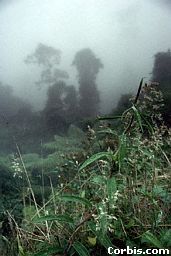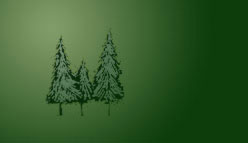
Plant Life
Rain forest ecosystems contain more plant life than virtually any other habitat in the world. Although their range has grown great with climate changes over the last several million years, in general, rain forests are some of the oldest ecosystems on Earth. As a result of this continuity, rain forests boast millions of different species, many of which are unique to rainforest habitats. Although they contain numerous species, rain forests are known for their general appearance. Most trees have tall, slender trunks that do not branch until near the crown. Many, such as kapok trees, are supported by thick buttresses that can stretch out to 33 ft or more. These buttresses provide needed support for rain forest trees, top heavy because nutrient poor rain forest soils lead to fragile root systems. Rain forest tree bark tends to be thin and smooth. An exception is palm trees, which are common in some rain forests and not in other types of forests. Rain forest plants have many unique physical characteristics that display the particular habitat, or niche, that a species occupies. Understory and midstory plants, such as relatives of the banana tree, tend to have particulally large leaves to capture as much light as possible, what little light that is not intercepted by the canopy above. These large leaves do not dry out as they would high in the canopy, where the sunlight creates a drier environment. These traits can change, however, when a plant's environment changes. Canopy trees may change their shape over the course of their life, depending on the environment around them. Leaves often get smaller as trees grow larger. In some cases, leaves of younger plants may be almost 10 times larger than adults of the same canopy tree species.
|




